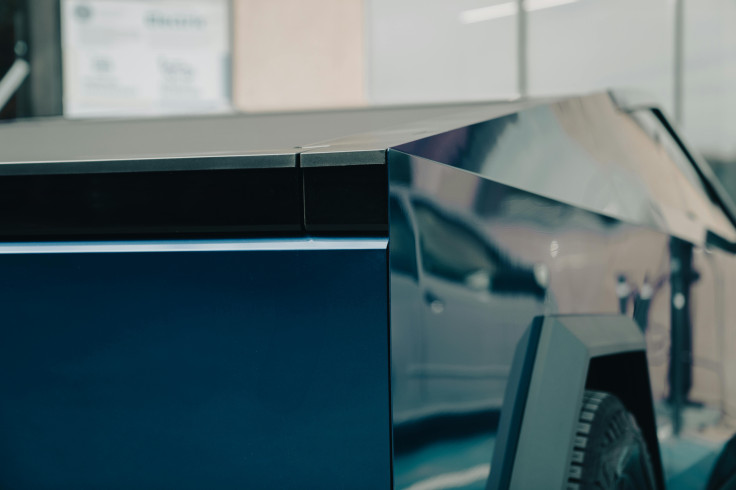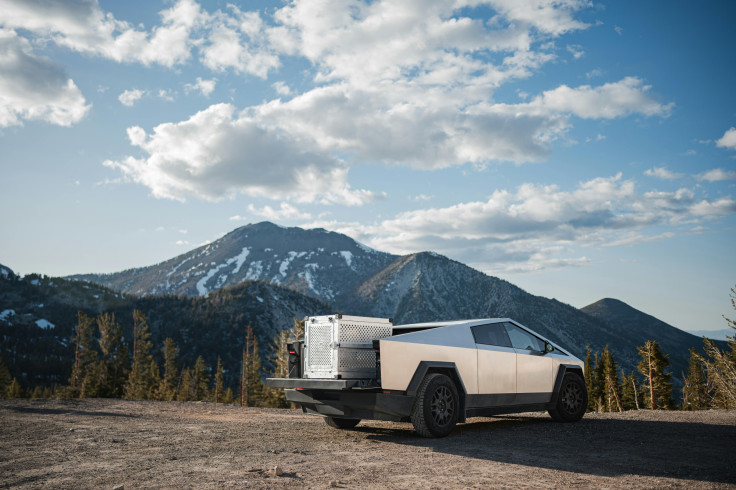
In a decision that has stunned both defence insiders and Tesla fans, the US Air Force has confirmed it will purchase two Tesla Cybertrucks—not for deployment, but for destruction. The electric pickups will serve as live-fire targets at the White Sands Missile Range in New Mexico, as part of a strategy to prepare for next-generation battlefield threats.
According to federal contracting documents, the futuristic electric pickups—to be tested at the White Sands Missile Range in New Mexico—will be used as live-fire targets.
Military planners believe adversaries may begin deploying Cybertrucks in combat zones due to their unusually resilient design.
The Air Force's market research concluded that the vehicle's stainless steel exoskeleton and angular form 'have been found not to receive the normal extent of damage upon major impact,' prompting fears that enemies could exploit its durability.
Why the Cybertruck?

Among 33 vehicles requested for testing under the US Special Operations Command's Standoff Precision Guided Munitions (SOPGM) programme, the Cybertruck is the only brand-specified model. Other vehicles include sedans, SUVs, pickups, and bongo trucks — but none are singled out like Tesla's divisive EV.
The Air Force's justification cites several features that set the Cybertruck apart:
- Unpainted stainless steel body: Designed to resist dents and corrosion
- 48V electrical architecture: Offers superior power and efficiency
- Bullet resistance: Demonstrated in independent tests, though not impervious to high-calibre rounds
The vehicles will be delivered in non-operational condition, drained of fluids, batteries removed, but towable, to avoid complications such as lithium-ion battery fires during missile impact.
What Will the Tests Involve?
The Cybertrucks will be subjected to live missile fire as part of SOPGM training, which includes precision-guided weapons like:
- AGM-114 Hellfire
- AGM-176 Griffin
- GBU-39/B Laser Small Diameter Bombs
These munitions are designed to strike vehicles with high accuracy while minimising collateral damage—a critical capability if Cybertrucks do become battlefield assets.
Real-World Concerns: From Ukraine to the Pentagon
The Air Force's fears aren't entirely speculative. In 2024, Chechen leader Ramzan Kadyrov posted footage of a gun-mounted Cybertruck reportedly deployed in Russia's war in Ukraine. Although Tesla CEO Elon Musk denied supplying the vehicles, the incident highlighted the potential for consumer technology to be repurposed in conflict zones.
Military analysts suggest that the Cybertruck's silent electric drivetrain, rugged terrain capability, and bullet-resistant panels could make it an attractive option for unconventional warfare, particularly among non-state actors or paramilitary groups.
Tesla's Struggles and the Irony of Military Interest

Ironically, the Air Force's interest comes amid waning consumer enthusiasm for the Cybertruck. Tesla sold just 4,306 units in Q2 2025, representing a 50.8% decline from the previous year, according to recent data from Kelley Blue Book.
The vehicle has faced multiple recalls, including issues with accelerator pedals and exterior panels detaching mid-drive.
Despite Musk's claims that the Cybertruck is 'apocalypse-proof,' critics have pointed to issues with rust, software glitches, and concerns about build quality. The Register described the Air Force's assessment of the truck's durability as 'a surprise' given Tesla's admissions of faults.
Strategic Implications: Preparing for Civilian Tech in Combat
The inclusion of Cybertrucks in missile tests reflects a broader shift in military strategy, as it prepares for threats that emerge from repurposed civilian technology. As irregular warfare evolves, so too must the tools and tactics used to counter it.
'In the operating theatre, it is likely the type of vehicles used by the enemy may transition to Tesla Cybertrucks,' the Air Force stated. 'Testing needs to mirror real-world situations.'
As warfare evolves, so too must the weapons—and the targets. And with the Cybertruck straddling the line between consumer gadget and battlefield asset, its next chapter might be written in smoke and steel.







